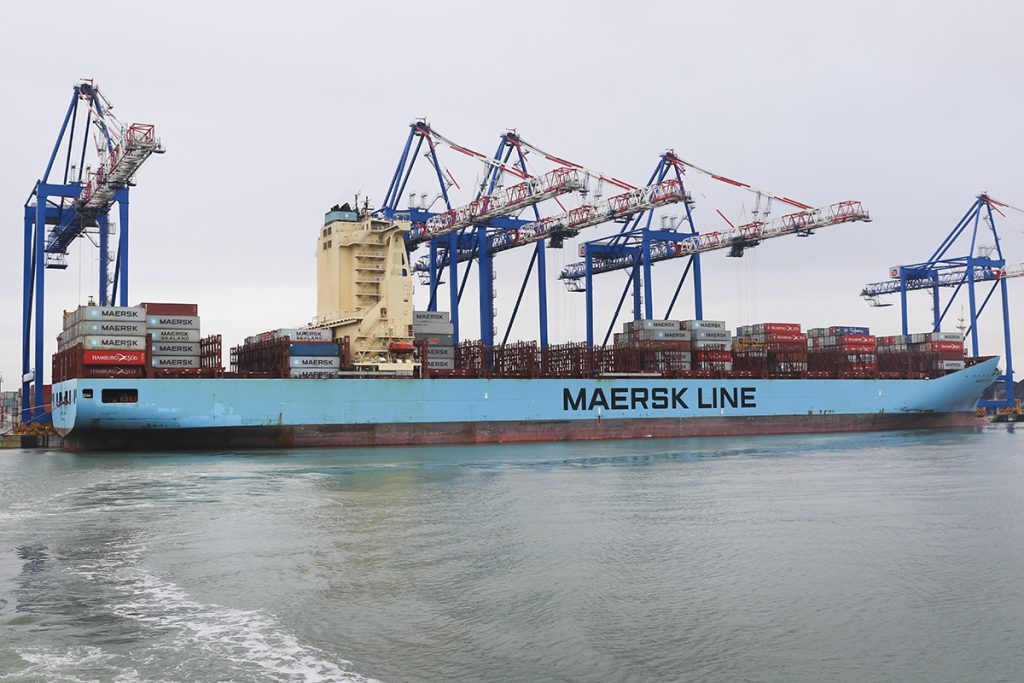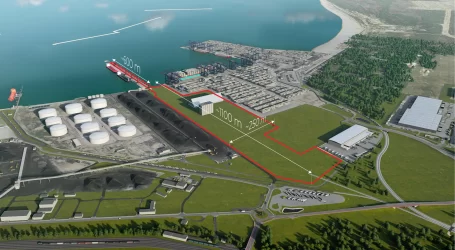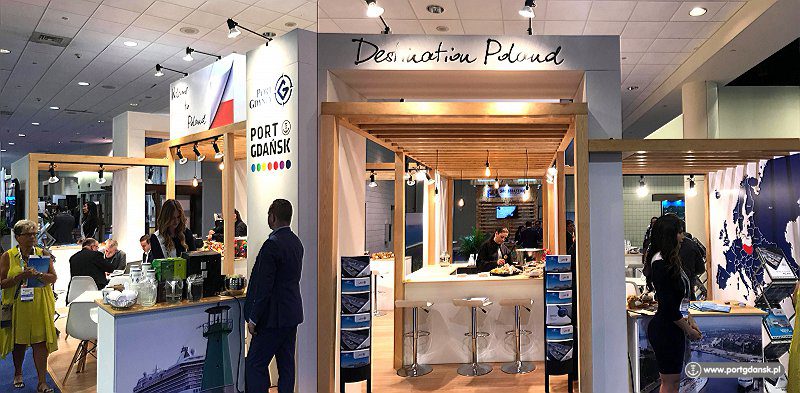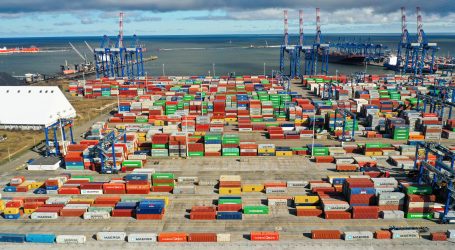Gdansk: Hapag-Lloyd and Maersk bet on ‘shuttle services’
In January 2010, an ocean-going container ship called at the DCT Gdansk container terminal for the first time as part of the Far East-Europe shipping service. The container ship Maersk Taikung arrived with its first cargo directly from China, as the largest in the history of the Port of Gdansk at the time and the first post-panamax class container ship served in Polish ports, opening the weekly calls of similar vessels. At the time, the inauguration of regular calls of ocean-going container ships to the Polish port was a historic event not only for Gdansk, but for the entire Baltic market.
The inclusion of calls to Gdansk on the AE10 service triggered increased container traffic with smaller vessels as well. Feeder connections to Russian and Scandinavian ports were then served by both Maersk container ships and the independent operator Unifeeder, fulfilling the assumptions of the Gdansk container hub for the Baltic. For the first month – until 2 February 2010, when Maersk’s Svendborg moored at the DCT terminal – Maersk’s Skagen, Maersk’s Sally and Maersk’s Tanjong came to Gdansk in turn. Each of these vessels was more than 330 metres long and 40 metres wide and housed around 8,400 TEUs each.
Since 2013, the largest container vessels in the world have regularly called at Gdansk, and the terminal itself has recorded new ‘record calls’ every few years on ocean services.
In June 2017, the world’s largest container ship, OOCL Hong Kong, with a capacity of 21,413 TEU, called at DCT Gdansk for the first and not the last time. It was not only the world’s largest container ship in the history of the Port of Gdansk, but also the first of its kind to cross the 21,000 container slot barrier. The container ship employed in the service of the shipowner OOCL served a route of 77 days with the following rotation: Shanghai – Ningbo – Xiamen – Yantian – Singapore – Suez Canal crossing – Felixstowe – Rotterdam – Gdansk – Wilhelmshaven – Felixstowe – Suez Canal crossing – Singapore – Yantian – Shanghai.
DCT Gdansk recorded another record in August 2019 with the MSC Gülsün, a container ship considered at the time to be the largest in the world in terms of cargo capacity expressed in TEU (20-foot container equivalent). During its berthing at terminal T2, 11,000 containers (18,000 TEUs) were handled.
Since October 2022, DCT Gdansk has been operating under the name Baltic Hub, still considered the largest container terminal in the southern Baltic Sea. The only Polish terminal capable of receiving the largest vessels in the world – ocean-going container ships with a length of 400 metres and a capacity of more than 20,000 containers.
With the construction of the new T3 terminal, a third deep-water quay will be built at the Baltic Hub, increasing the terminal’s handling capacity by 1.5 million TEUs per year (for a total of 4.5 million TEUs). The third quay will be 717m long and 17.5m deep. It will also include a 36ha container yard. The value of the entire investment is more than €470 million. The T3 project also includes the purchase of seven quay cranes capable of handling the world’s largest vessels and 20 semi-automatic aRMG cranes that will be remotely operated by operators, located in ergonomically designed workspaces. This will allow for a safer, more efficient and more comfortable working environment.
Today, the largest ocean-going container ships of shipowners such as CMA CGM, COSCO, OOCL, MSC as well as Maersk and Hapag-Lloyd call at Gdansk. In January this year, the latter two – Hapag-Lloyd and Maersk – signed a long-term operational cooperation agreement called ‘Gemini Cooperation’, which will begin in February 2025. The ambition of both giants is to provide a flexible and interconnected ocean network with industry-leading reliability.
The collaboration with Maersk will help us further enhance the quality we deliver to our customers. In addition, we will benefit from increased efficiencies in our operations and joint efforts to further accelerate the decarbonisation of the maritime industry,’ said Rolf Habben Jansen, CEO of Hapag-Lloyd, in January.
We are delighted to have established a partnership with Hapag-Lloyd, which is an ideal ocean partner for our strategic journey. By establishing this partnership, we will offer our customers a flexible ocean network that will raise the bar of reliability in the industry. This will strengthen the integrated logistics offering we offer and meet our customers‘ needs,’ said Vincent Clerc, CEO of Maersk, in turn.
The collaboration between Hapag-Lloyd and Maersk will cover a fleet of around 290 vessels with a total capacity of 3.4 million containers (TEUs) (Maersk 60 per cent and Hapag-Lloyd 40 per cent).
As part of the agreement, both companies have set ambitious targets – to increase voyage reliability to above 90 per cent and improve efficiency, which will also bring them closer to reducing their carbon footprint.
Source: PortalMorski.pl




